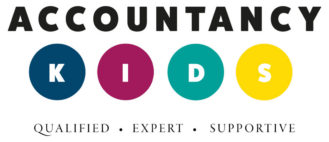What’s basis period reform
The rules that sole traders and partnerships use to work out their profits is changing from April 2023. This is called the basis period reform and will affect anyone whose annual accounting period ends on a date other than between 31 March and 5 April.
For 2023/2024 and subsequent years the taxable amount will be calculated by apportioning the business accounts of two years.
Changes on how to report profit
The best way to explain this is through an example:-
If you use the 31 December 2022 as your accounting year end date then you are assessing the twelve months from 1 January 2022 – 31 December 2022. The relevant tax year when your accounting period ends is in tax year 2022 – 2023 and reportable in this tax return.
From 6 April 2023, the new tax year basis applies, this means that you need to report profit up to the tax year end even if your accounting year ends at a different time.
In our example we will need to apportion profits between two accounting periods. The 2023-2024 period is known as the transitional year.
1 January 2023 – 31 December 2023
1 January 2024 – 5 April 2024
- In your self assessment tax return for 2023 – 2024 you will report profits covering more than one year.
- You may need to apportion two set of accounts to calculate your profits for the year.
If you report profits covering more than 12 months the excess is known as transition profit and can be reduced by Overlap Relief.
Spreading Relief
In the transitional year the extra profit can be taxed over five years starting in 2023-2024. This would result in an additional 20% of taxable profit in 2023-24 and for each of the following four years.
It is possible to elect to accelerate when the extra profits are taxed. If you know that a large contract is starting in 2024/25 then you might want to trigger the tax quicker to avoid higher rate tax.
What is overlap relief
In it’s simplest term overlap relief is an allowance to compensate you for profits that are taxed twice. If you didn’t have a 31 March or 5 April starting date when you started your business then the rules for working out your taxable profit would have resulted in your profits being double taxed on these profits.
Under current rules the relief is allowed when your business ceases or you change your accounting basis period. As the basis period reform is forced on you any overlap relief you’re entitled to must be used for 2023-2024 or earlier.
If your entitled to overlap relief you can use it in any of the 2021/22, 2022/23 and 2023/24 tax years whichever gives the greatest tax saving.
How do I find out my overlap relief
If you are a childminding business who has traded for many years then it’s possible you don’t know your overlap relief figures. You should contact HMRC to obtain the overlap amounts.
HMRC have now developed an online tool to obtain information about overlap relief. This figure is needed to work out your taxable profits for 2023/24.
Please click on the link here to direct you to the HMRC tool: Get your Overlap Relief figure – GOV.UK (www.gov.uk)
You must claim / use your overlap relief in tax year 2023-2024 or earlier.
Apportionment methods and estimates
When you apportion profits the normal method is to look at the number of days however a reasonable alternative is to apportion in months or weeks.
In some circumstances it is likely that you will not know your profit for the whole tax year as your accounts are not finalised for the second part of the tax year.
In this instance you must estimate provisional figures on your tax return and estimate the profit. Once you have prepared the actual figures you must go back and amend the tax return.
What year end should a new business choose in 2023
The simplest thing is to have a short period of account aligning the accounting year end to the tax year end. Any new business should prepare accounts to the 31 March 2024. This also aligns with Making Tax Digital quarter reporting periods that start in April 2026.
There is no mandatory law that would stop you having a 31 August, 31 December or 31 January accounting year end if your business is cyclical and better suited to these accounting year end dates.
In the main for simplicity it’s best to avoid apportionment of profits and estimating a second set of accounts in your tax return. You would also have to remember to go back and amend the tax return at a future date when actual accounting results are known.
